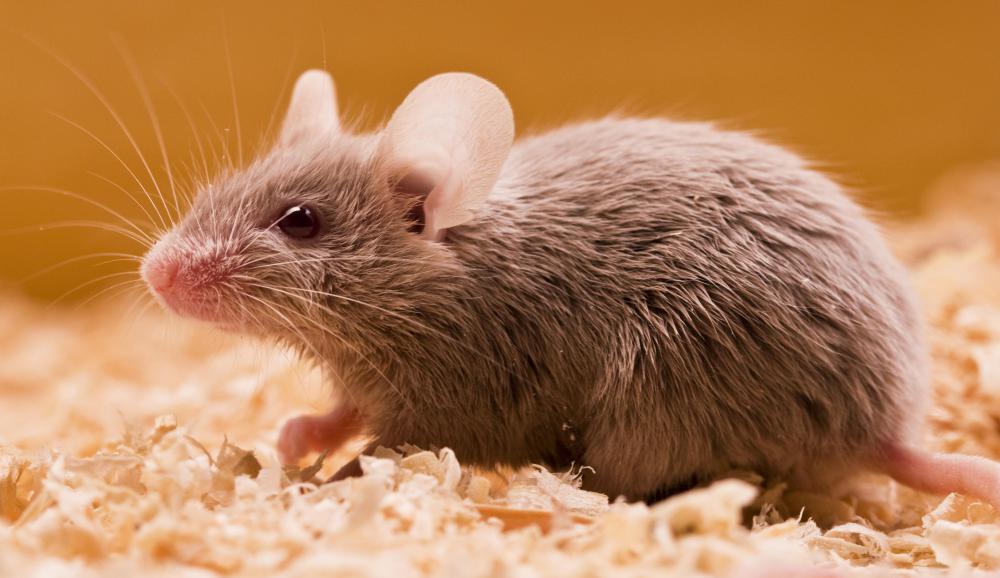At AllThingsNature, we're committed to delivering accurate, trustworthy information. Our expert-authored content is rigorously fact-checked and sourced from credible authorities. Discover how we uphold the highest standards in providing you with reliable knowledge.
What Is a Motley Corn Snake?
The motley corn snake is a corn snake that has been bred to have a motley pattern morph, which is a distinct variation within a species. Corn snakes are the most popular breed of pet snake because they are docile, easy to take care of, available in many attractive colors and patterns, and usually enjoy being handled. Like any pet snake, a motley corn snake has certain requirements in terms of care.
There are several variations of the motley pattern morph, but all motleys have patternless undersides and merging blotches. This often resembles spots in a row on the back of the snake, although in some snakes it approaches a striped look in places. A motley corn snake can have any of the many color morphs, and so can range in color from very pale shades of grey to brilliant red and yellow.

In the wild, corn snakes are found in the central and eastern United States, live in grasslands and forests, and often eat mice in corn that is being stored. Captive corn snakes can reach four to six feet (1.22 to 1.83 m) in length and live up to around 20 years with proper care. Aggression towards humans is rare, although any snake that feels threatened may bite.
Pre-killed well-thawed frozen mice are the food of choice for a pet motley corn snake. Live mice are not recommended because they can attack and damage the snake, and pre-killed mice are euthanized more humanely than constriction by a snake. Corn snakes are usually good feeders, but purchasing a motley corn snake that has always eaten frozen mice is recommended to avoid problems. Feeding schedule and size of mouse is variable depending on the age of the snake.
A vivarium or enclosure for a motley corn snake should be kept relatively warm and have both hotter and cooler areas to allow the snake to regulate its body temperature. Corn snakes live on or close to the ground rather than in trees, but do appreciate some climbable areas in the tank. A hiding place for the snake is very important in the vivarium in order to help the snake feel secure and avoid becoming stressed, and the snake should be left alone while it is hiding. Corn snakes are experts at escaping from enclosures, so it is very important that the tank is secure at all times. Specific instructions on establishing and maintaining the vivarium should be found and followed before obtaining the snake.
Frequently Asked Questions
What is a Motley Corn Snake?
A Motley Corn Snake is a morph of the common corn snake, characterized by a unique pattern mutation. Unlike the typical corn snake with its bold, saddle-like markings, the Motley variant exhibits a more blended pattern with stripes and blotches, and often has a clear belly without the checkered pattern seen in standard corn snakes.
How does the Motley mutation affect a Corn Snake's appearance?
The Motley mutation alters the dorsal pattern of the corn snake, resulting in a reduction or absence of the typical saddle markings. This creates a more streamlined appearance with stripes or a chaotic pattern of blotches. Additionally, the belly of a Motley corn snake lacks the traditional checkered pattern, often appearing plain or lightly marked.
Are Motley Corn Snakes genetically different from other corn snakes?
Yes, Motley Corn Snakes carry a specific genetic mutation that affects their patterning. This mutation is heritable, meaning it can be passed down to offspring. Genetically, they are the same species as other corn snakes, but the Motley gene distinguishes their morphological traits from the standard wild-type patterns.
Can Motley Corn Snakes be found in the wild?
Motley Corn Snakes are primarily a product of selective breeding in captivity. While the genetic mutation could occur in the wild, the likelihood of finding a naturally occurring Motley Corn Snake is extremely low. Breeders have developed this morph for its unique appearance, which is more commonly seen in the pet trade.
What kind of habitat is best for a Motley Corn Snake in captivity?
A Motley Corn Snake thrives in a habitat that mimics its natural environment. This includes a warm enclosure with a temperature gradient of 75-85°F, hiding spots, a water bowl, and substrate for burrowing. A secure enclosure is essential as corn snakes are known escape artists. Regular cleaning and proper humidity levels are also crucial for their health.
Is the care for a Motley Corn Snake different from other corn snake morphs?
The care for a Motley Corn Snake is generally the same as for any other corn snake morph. They require a balanced diet of appropriately sized rodents, a temperature-controlled environment, and regular handling to maintain tameness. As with all reptiles, it's important to provide UVB lighting and monitor their health for signs of illness or stress.
AS FEATURED ON:
AS FEATURED ON:











Discuss this Article
Post your comments